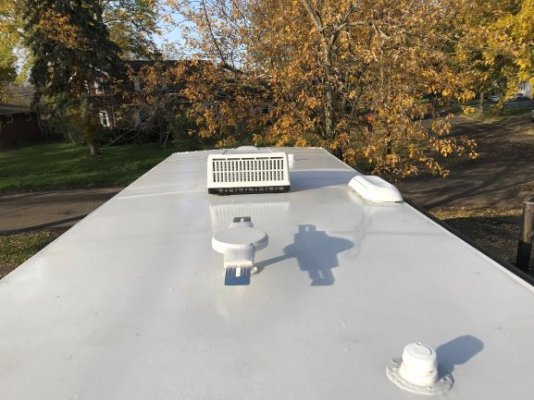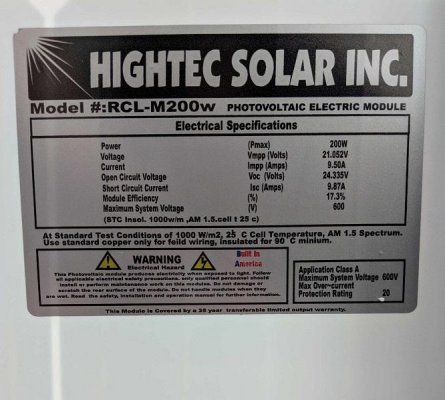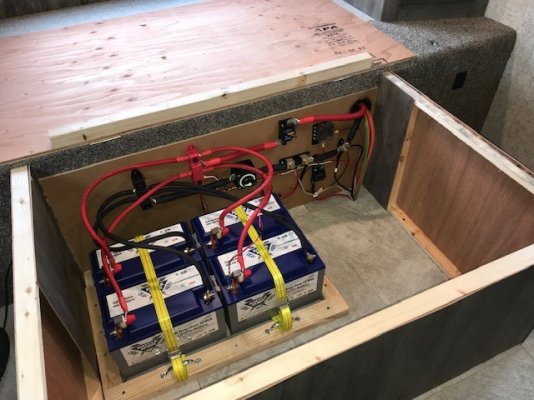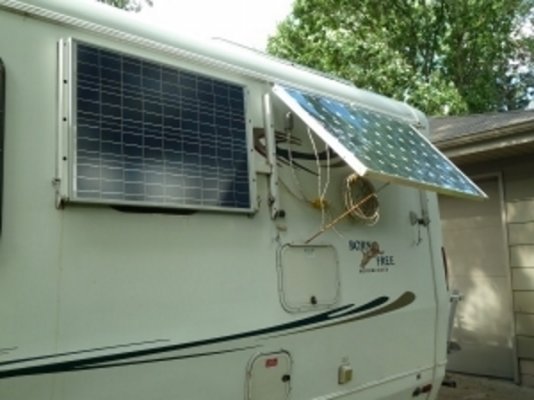Kathy & Bill
Well-known member
- Joined
- Oct 1, 2017
- Posts
- 98
I'm starting to plan out our solar system and will be buying the components over the winter. Our 30' trailer roof (pic attached) has ample open space for 6, possibly 8, RCL-200w Hightec solar panels (pic attached). If I install 6 panels, I was thinking 2 sets of 3 in series, paralleled to the controller. If I go with 8 panels; it would be 4 sets of 2 in series paralleled to the controller. Putting the 8 panels on the roof might be a little tight and I would end up with shading I'm sure. With 6 panels that would give me 1200 watts. I currently have 4 100ah Battle Borns and thinking I'll add 2 more this winter. I read someplace a good rule was to have 1 1/2 to 2 times more solar than your battery bank, 6 panels would give me that if I add the 2 batteries.
I have been reading info on the MPPT controllers and I'm a little confused. If I go with 6 panels (2 sets of 3) I'll be around 75 volts, 20 amps going into the controller. Does this mean a 100/30 MPPT controller will work with this setup? Help here would be appreciated.
My current 400ah system (pic attached) worked very well this summer. Didn't get out as much as we wanted but on a 5 night/6 day stay in the Adirondacks I only had to run the generator once about 3 hours to charge the batteries on our stay. Adding 2 more batteries and the solar we should be pretty well set for power I would think. Our biggest draw is the mini fridge in the outside kitchenette we use for drinks. I've been looking around for a more efficient beverage fridge for a replacement, any ideas there would be helpful.
Looking forward to everyone's insight and ideas... this is a Great forum!
I have been reading info on the MPPT controllers and I'm a little confused. If I go with 6 panels (2 sets of 3) I'll be around 75 volts, 20 amps going into the controller. Does this mean a 100/30 MPPT controller will work with this setup? Help here would be appreciated.
My current 400ah system (pic attached) worked very well this summer. Didn't get out as much as we wanted but on a 5 night/6 day stay in the Adirondacks I only had to run the generator once about 3 hours to charge the batteries on our stay. Adding 2 more batteries and the solar we should be pretty well set for power I would think. Our biggest draw is the mini fridge in the outside kitchenette we use for drinks. I've been looking around for a more efficient beverage fridge for a replacement, any ideas there would be helpful.
Looking forward to everyone's insight and ideas... this is a Great forum!




